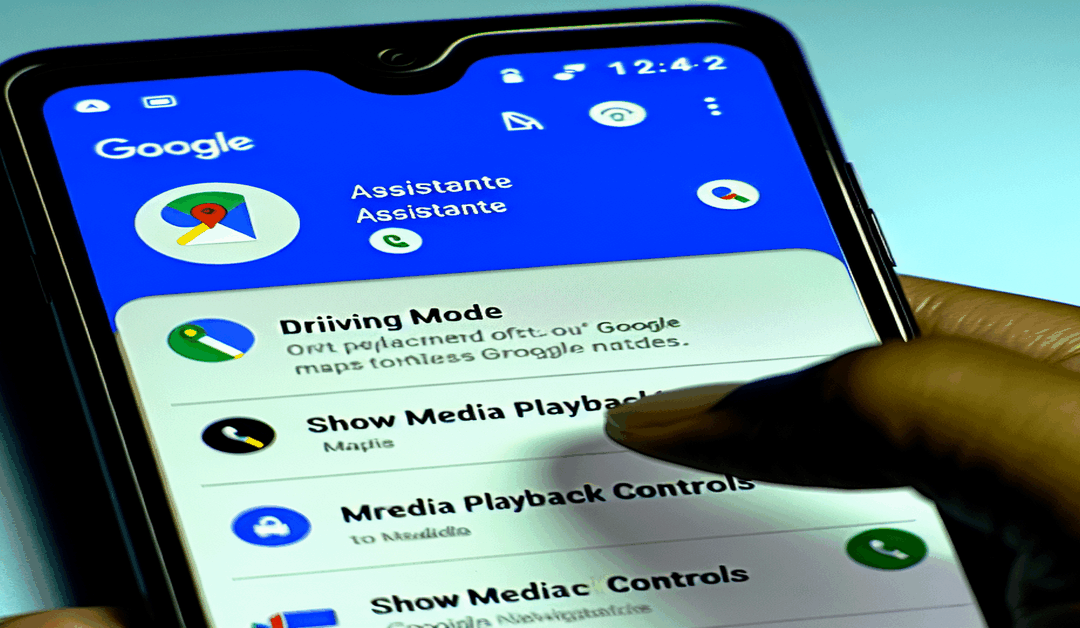Google Bids Farewell to Assistant Driving Mode in Maps: Paving the Way for Gemini AI
In a significant move that marks the beginning of a new era in AI-powered navigation, Google has officially confirmed the removal of the Assistant “Driving Mode” from the Google Maps app on Android devices. This decision comes as part of a broader transition to Gemini, Google’s ambitious new AI initiative set to replace Google Assistant later this year.
The Rise and Fall of Driving Mode
When first introduced in 2019, Driving Mode was envisioned as a compelling alternative to Android Auto for Phone Screens. It boasted a sleek dashboard and app-like experiences for media and navigation, offering users a seamless and intuitive interface for their driving needs. However, over time, Driving Mode underwent a series of changes, ultimately being pared down to a basic voice bar.
Despite its initial promise, the removal of Driving Mode from Google Maps signals a shift in Google’s approach to AI-assisted navigation. As the company prepares to launch Gemini, it is clear that they are streamlining their offerings and focusing on the future of AI integration.
Navigating the Transition: What Users Need to Know
For users who have grown accustomed to relying on Driving Mode for media controls and voice commands, the transition may require some adjustment. Google has provided guidance on alternative methods to access key features:
1. **Map-related tasks**: Users are now directed to use the Assistant button in the top-right corner of Google Maps for map-related tasks, such as requesting directions or finding nearby points of interest.
2. **Calls and texts**: Device notifications will now handle calls and texts, ensuring that users can still stay connected while on the road.
3. **Media controls**: To access media controls within Google Maps, users can enable the “Show media playback controls” option in the navigation settings.
While these changes may take some getting used to, Google assures users that the transition will ultimately lead to a more seamless and powerful AI experience with the introduction of Gemini.
Looking Ahead: The Promise of Gemini AI
As the tech industry eagerly awaits the launch of Gemini later this year, it is clear that Google is betting big on the future of AI. With the removal of Driving Mode from Google Maps, the company is signaling its commitment to streamlining its offerings and focusing on the development of cutting-edge AI technologies.
While details about Gemini are still scarce, industry experts anticipate that it will bring a new level of sophistication and intuition to AI-assisted navigation and beyond. As Google continues to push the boundaries of what is possible with artificial intelligence, it is likely that we will see a wave of innovation across a wide range of applications, from smart home devices to virtual assistants and beyond.
Embracing the Future of AI-Powered Navigation
As we bid farewell to Assistant Driving Mode in Google Maps, it is an exciting time to be a part of the AI revolution. While change can be challenging, it is also an opportunity to embrace new possibilities and explore the potential of emerging technologies.
For those who are passionate about the future of AI and its impact on our daily lives, now is the time to stay informed, engaged, and open to new ideas. As Google and other tech giants continue to invest heavily in AI research and development, it is clear that the future of navigation, and indeed the future of technology as a whole, is rapidly evolving.
So, whether you are a developer, a designer, or simply someone who is fascinated by the potential of artificial intelligence, we encourage you to join the conversation and share your thoughts on this exciting new chapter in the history of AI-powered navigation.
#GoogleMaps #DrivingMode #GeminiAI #AINavigation #FutureOfTech
-> Original article and inspiration provided by Abner Li
-> Connect with one of our AI Strategists today at ReviewAgent.ai

